Four
THE WOODS HOLE BRANCH
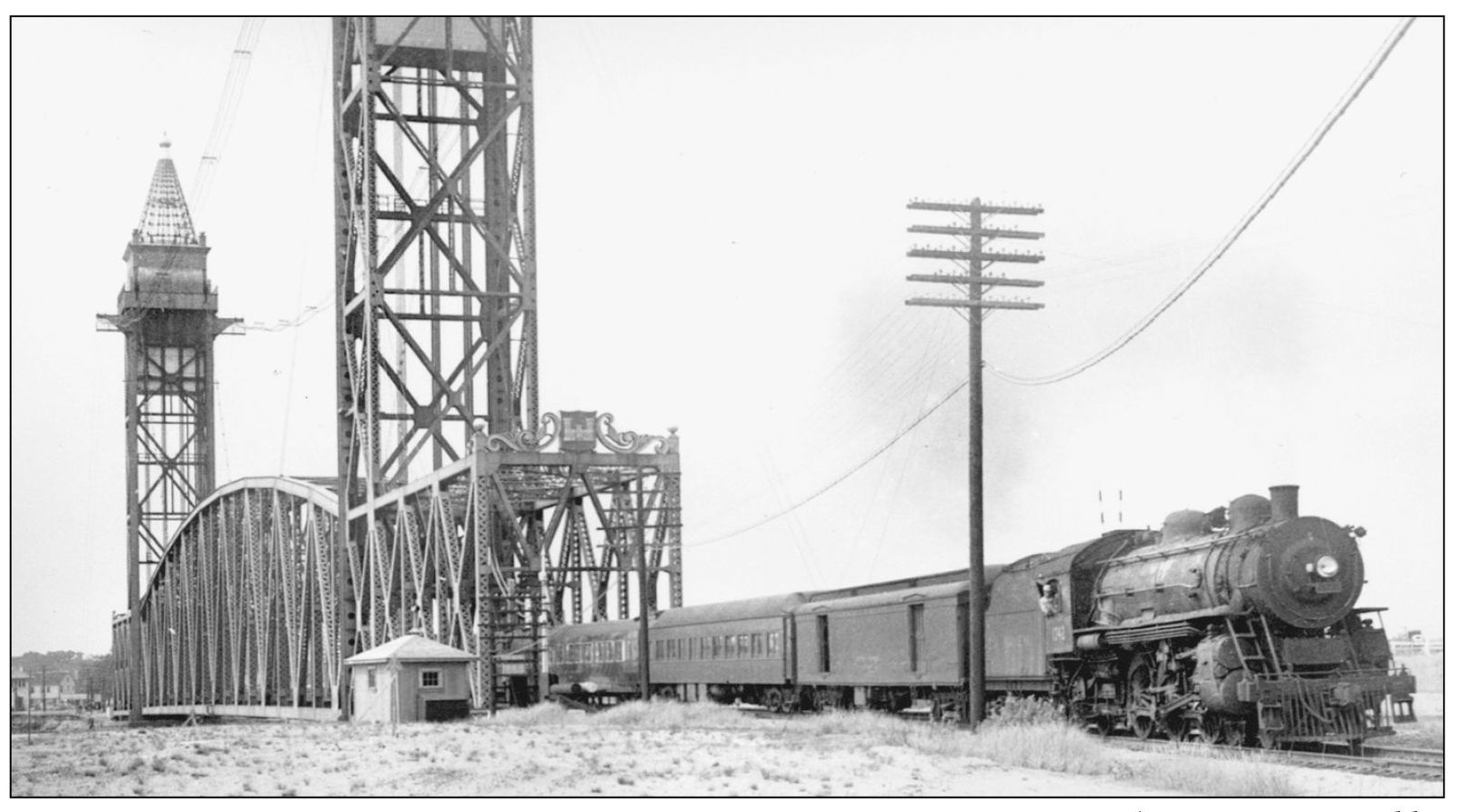
THE WOODS HOLE SECTION, THE DAY CAPE CODDER, JULY 9, 1939. The Day Cape Codder crosses the bridge to head down the Woods Hole branch, led by New Haven locomotive No. 1342, an I-2 Pacific class. (Courtesy of Howard Goodwin.)

THE GRAY GABLES STATION. This station, named for Pres. Grover Cleveland’s nearby summer home, was constructed in 1892. Although he frequently traveled by presidential yacht to his summer property on the Cape, he was not known to travel by train. This station was retired from use c. 1940 and is now a museum on the grounds of the Aptuxcet Trading Post. (Courtesy of Howard Goodwin.)

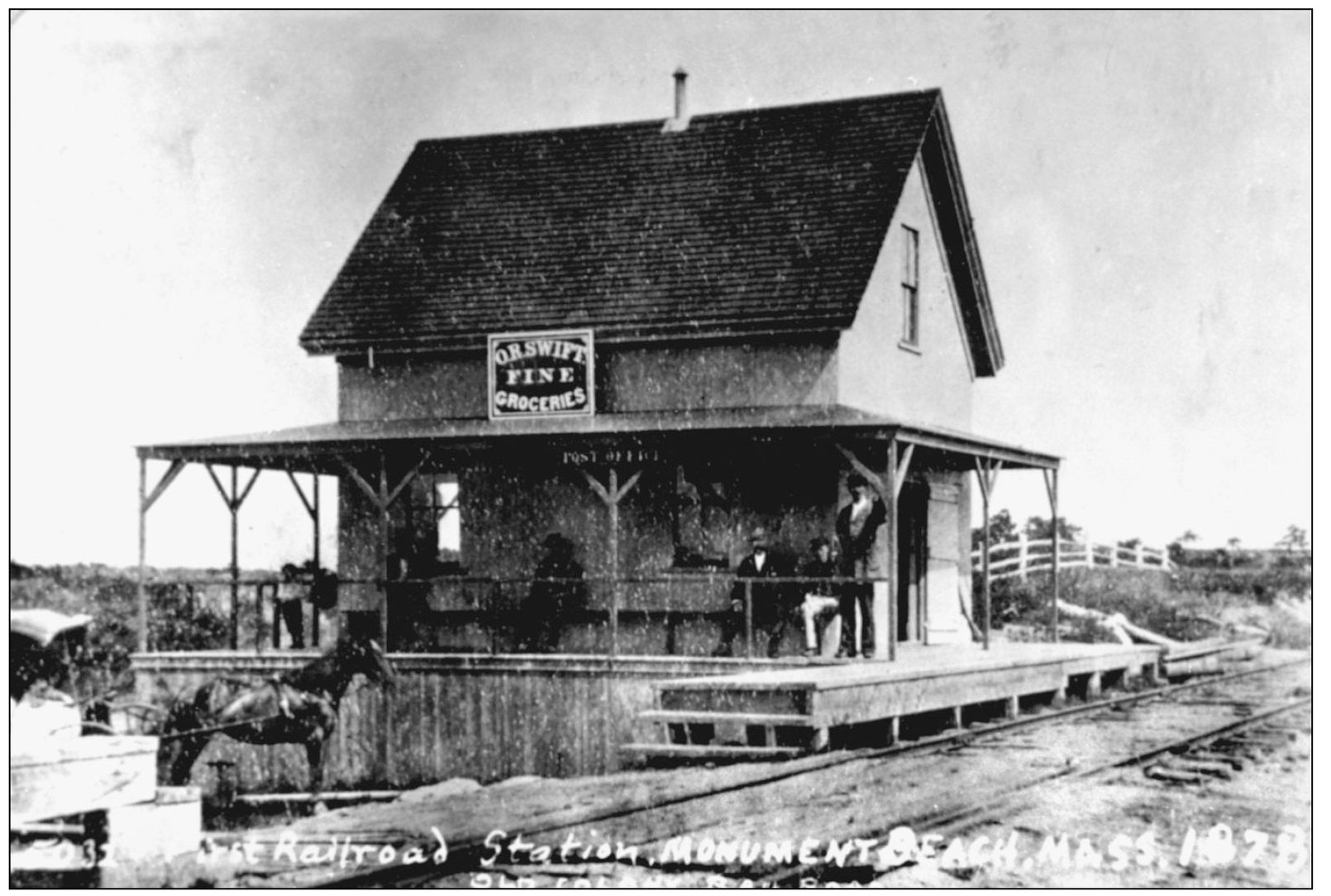
THE ORIGINAL MONUMENT BEACH STATION. This building was constructed by O.R. Swift in 1875 and served as the station until the railroad built its own in 1883. Swift operated a grocery store, and this building also housed the post office and freight and express offices, in addition to selling tickets for the railroad. (Courtesy of the Bourne Archives.)

THE SECOND STATION FOR MONUMENT BEACH. This building, the second station to serve Monument Beach, was constructed in 1883. By 1894, the railroad had moved it to the site of the current Monument Beach station. This structure was destroyed in a spectacular 1906 fire and was replaced by the brick building that survives today. (Courtesy of Howard Goodwin.)
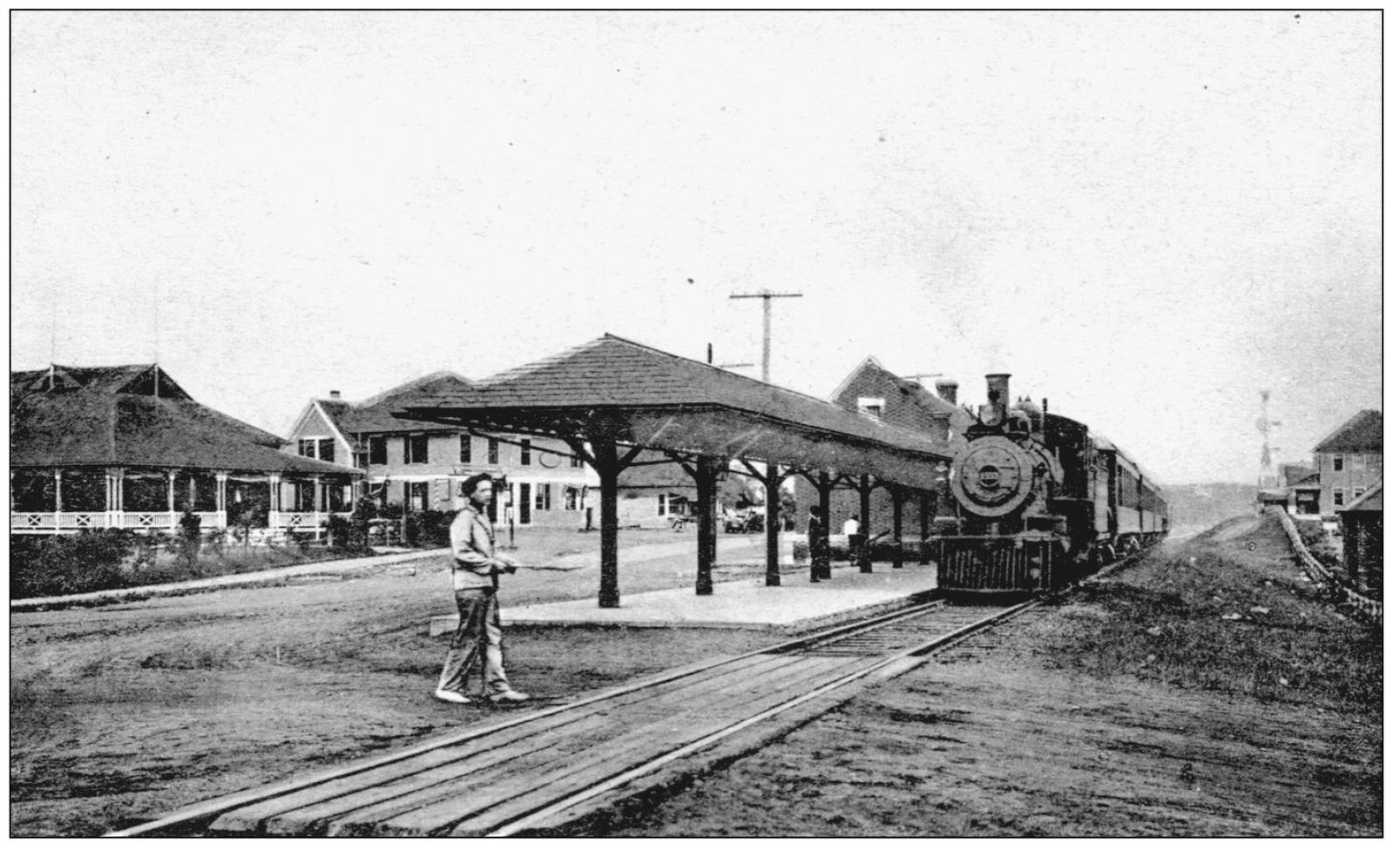
AT THE STATION, MONUMENT BEACH. This train, shown stopped at the Monument Beach station, is headed toward Buzzards Bay, where it will probably continue on to Boston. Monument Beach was the second station on the Woods Hole branch. Now approaching its centennial, it remains in the exact same location. (Courtesy of Howard Goodwin.)
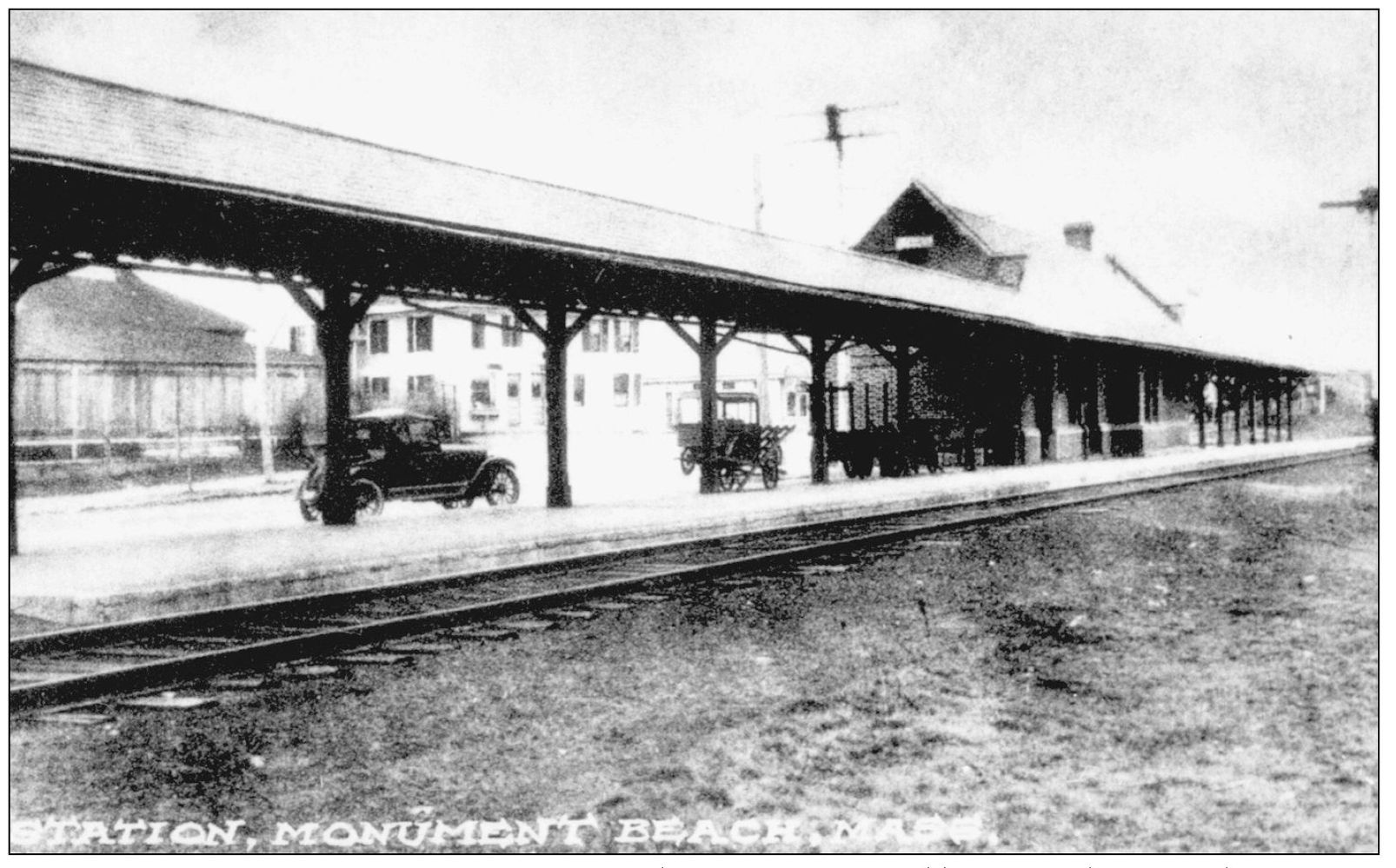
THE MONUMENT BEACH STATION, 1908. The station pictured here was the second to occupy this spot. It was constructed in 1906 after a fire destroyed half the village of Monument Beach. Today, this station is a private residence with some additions, but it still resembles its appearance in this postcard view. (Courtesy of Howard Goodwin.)

THE POCASSET RAILROAD STATION. This postcard shows the Pocasset station and freight house on the Woods Hole branch. The station was originally called Wenaumet, and the Pocasset station was about one mile farther down the tracks. When the Pocasset station was moved farther down the line to Cataumet, to serve as the freight house there, this station was renamed Pocasset. It burned down on May 20, 1914, but a new one was built in 1915 on the same site. This new Pocasset station was demolished in 1960, although remnants of the foundation and platform are still visible. (Courtesy of Howard Goodwin.)

THE POCASSET STATION, 1914. In 1906, the original Pocasset station was taken out of service, and this stop was renamed Pocasset. The station pictured here was built in 1872 and stood until May 20, 1914, when it succumbed to fire. A replacement station was built here in 1915. (Courtesy of Howard Goodwin.)
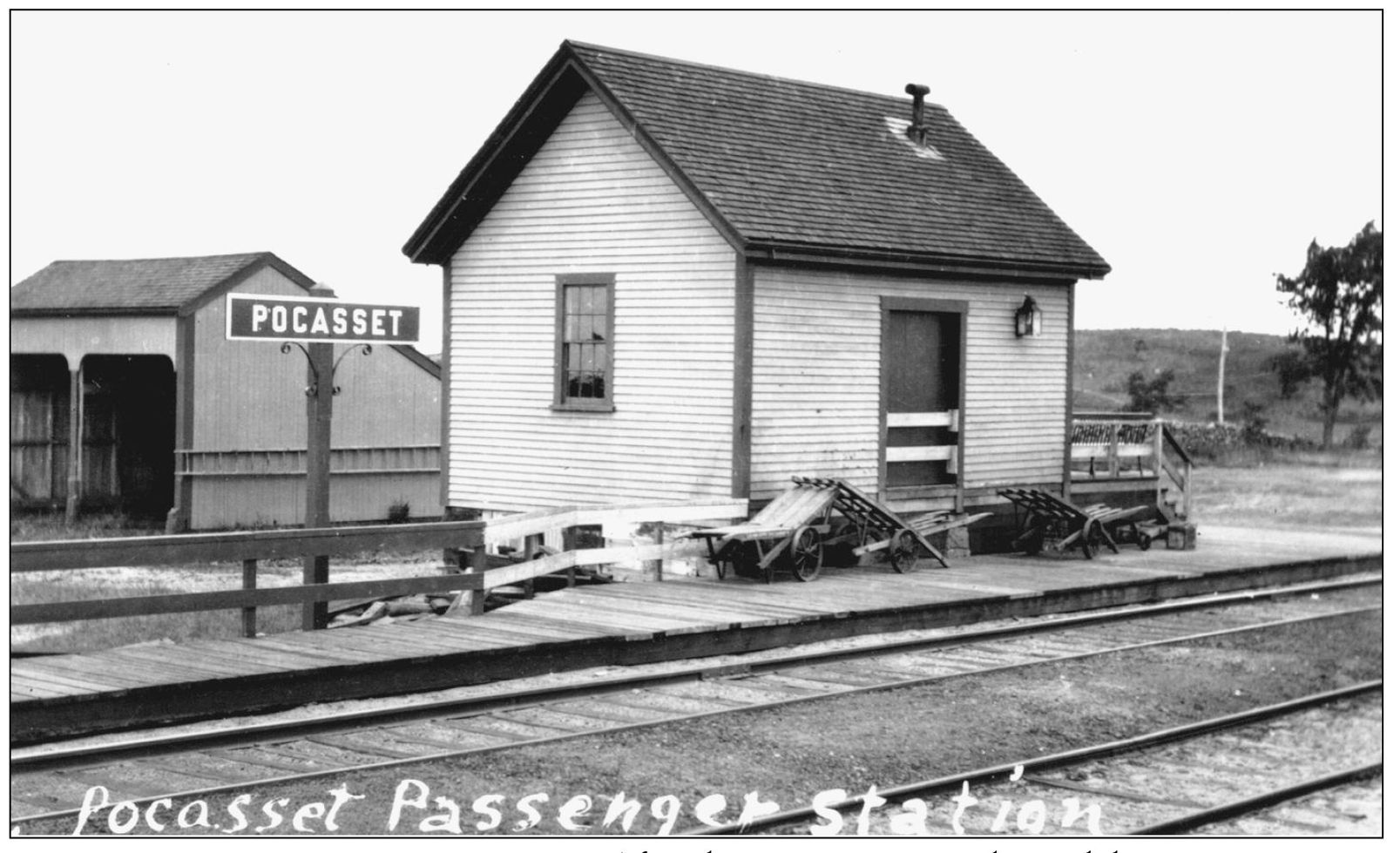
THE POCASSET FREIGHT HOUSE, 1914. After the Pocasset station burned down in May 1914, this freight house served a dual role as temporary passenger station and freight house, until a new station could be constructed the following year. (Photograph by Louis H. Benton, courtesy of Howard Goodwin.)

THE POCASSET STATION, AUGUST 4, 1929. This photograph captures the third and final station at Pocasset. It was built in 1915 to replace the previous structure (which burned) and remained until 1960, when it was demolished. A corner of the freight house is also visible to the left. (Photograph by Louis H. Benton, courtesy of Howard Goodwin.)
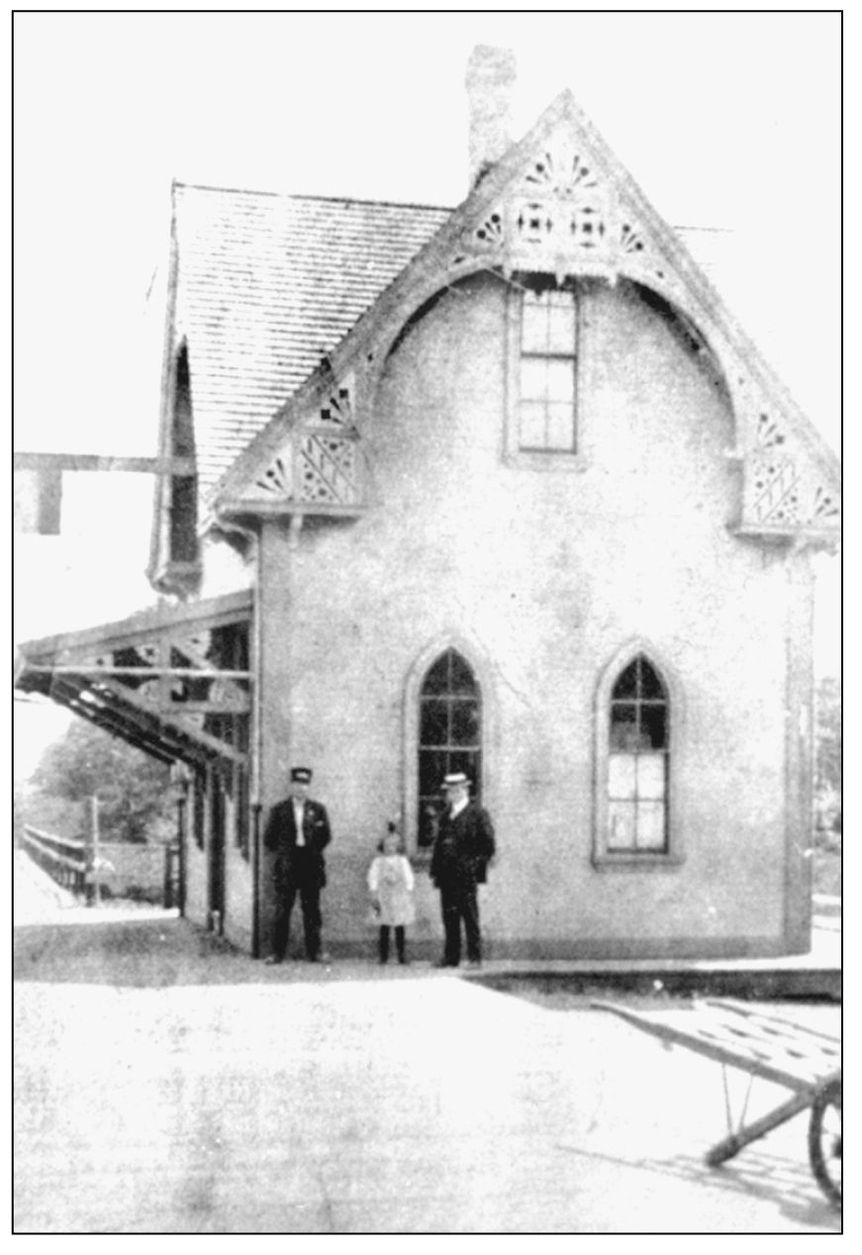
THE ORIGINAL STATION AT CATAUMET. The first Cataumet station was built in 1890 (18 years after the Woods Hole branch opened) but burned down in 1925. Note the ornate gingerbread trim on this station, making it unique on the Cape. (Courtesy of Howard Goodwin.)

THE DUDE TRAIN, CATAUMET. The Cataumet station was always a stop for the private Dude train. (Courtesy of Howard Goodwin.)
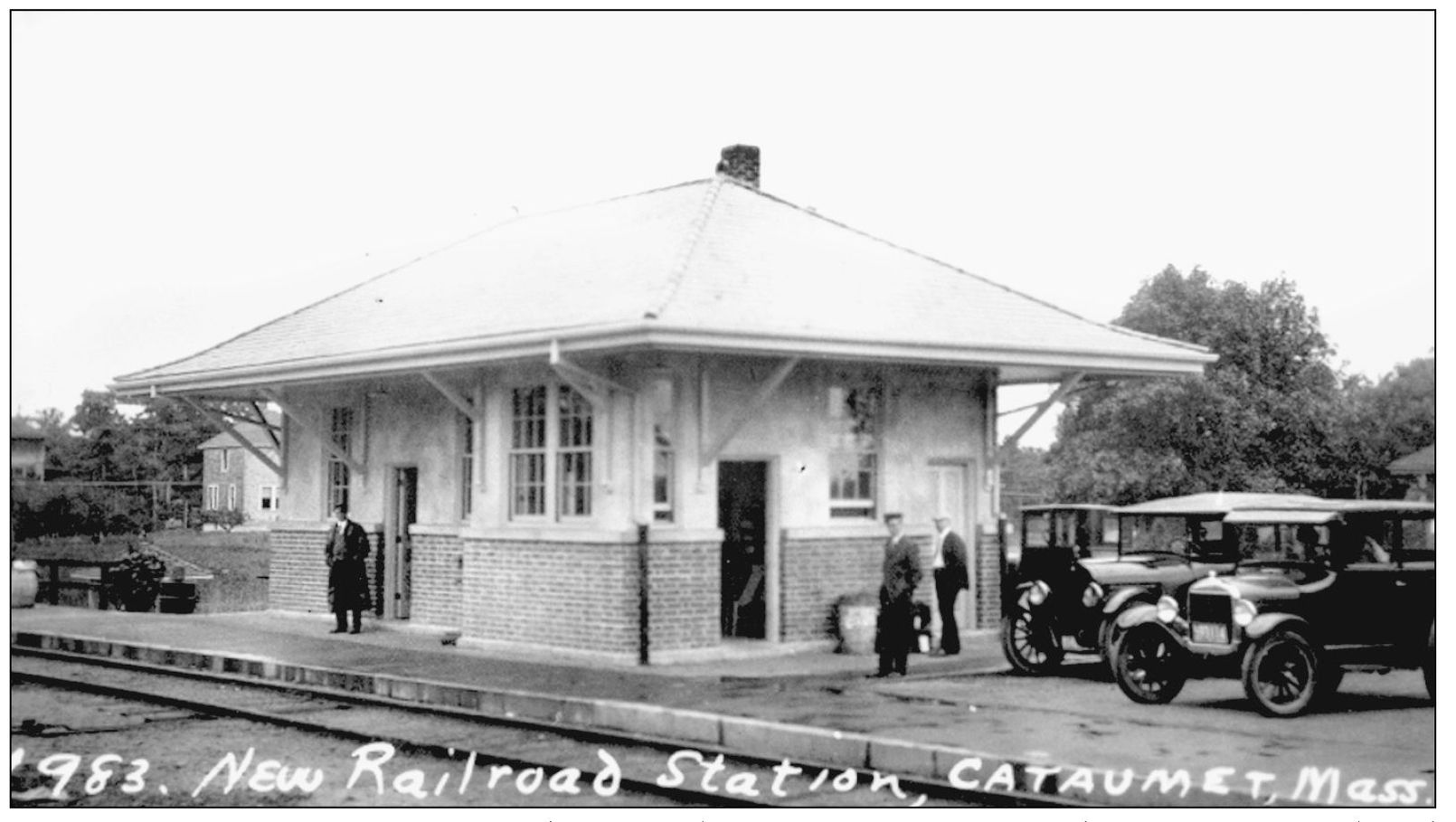
THE CATAUMET STATION, 1930. The original station at Cataumet, with its ornate gingerbread detail, was constructed in 1890. After that station burned down in 1925, it was replaced by this structure, which still stands today. (Photograph by Louis H. Benton, courtesy of Howard Goodwin.)
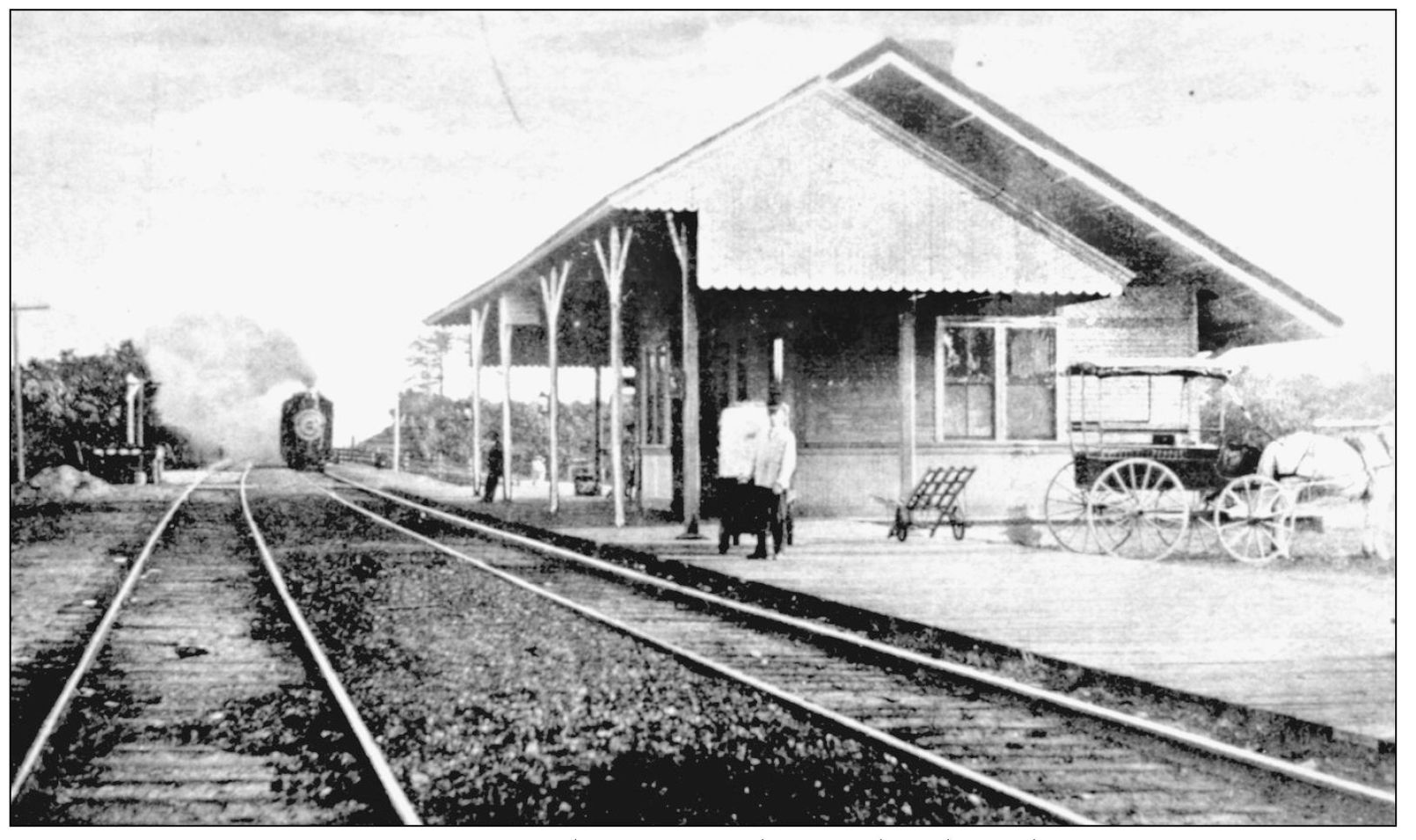
THE NORTH FALMOUTH STATION. This view of the North Falmouth station features a train pulling in. (Courtesy of Howard Goodwin.)

THE SECOND NORTH FALMOUTH STATION. This photograph captures the second station at North Falmouth shortly after its 1905 construction. There are plenty of horse-drawn carriages on hand to meet the train on this day, and the size of the station suggests it was a busy stop for the railroad. This station burned down in 1969, just a few years after the end of New Haven passenger service on this line. (Courtesy of Howard Goodwin.)
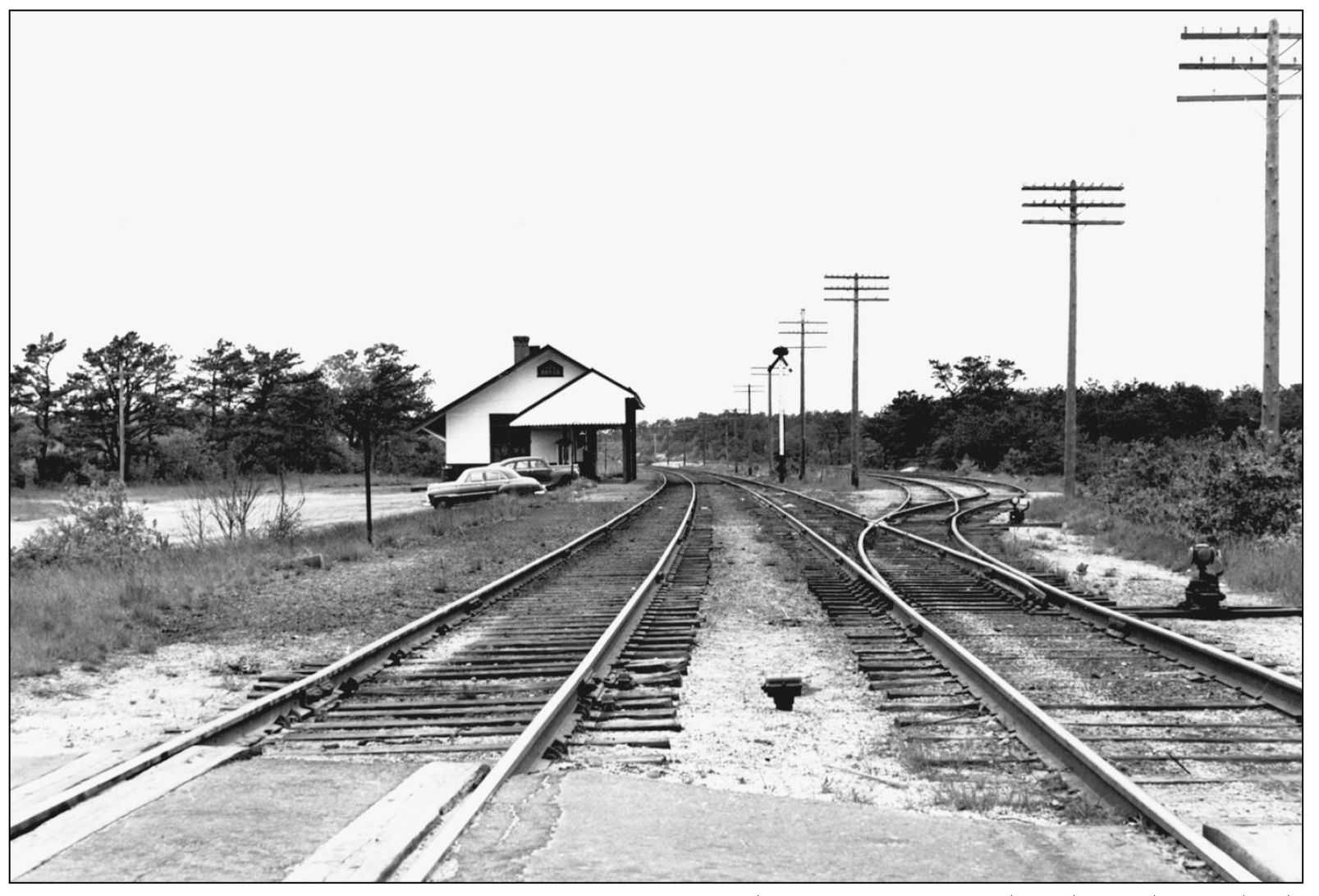
THE NORTH FALMOUTH STATION, JUNE 9, 1955. The station at North Falmouth was built by the New Haven Railroad in 1905. (New Haven Railroad photograph by Charles Gunn, courtesy of William Reidy.)

A TROOP TRAIN AT CAMP EDWARDS. During wartime, troop trains were common on the Cape to Camp Edwards, in Sandwich, and to Camp Wellfleet, in South Wellfleet. (Author’s collection.)
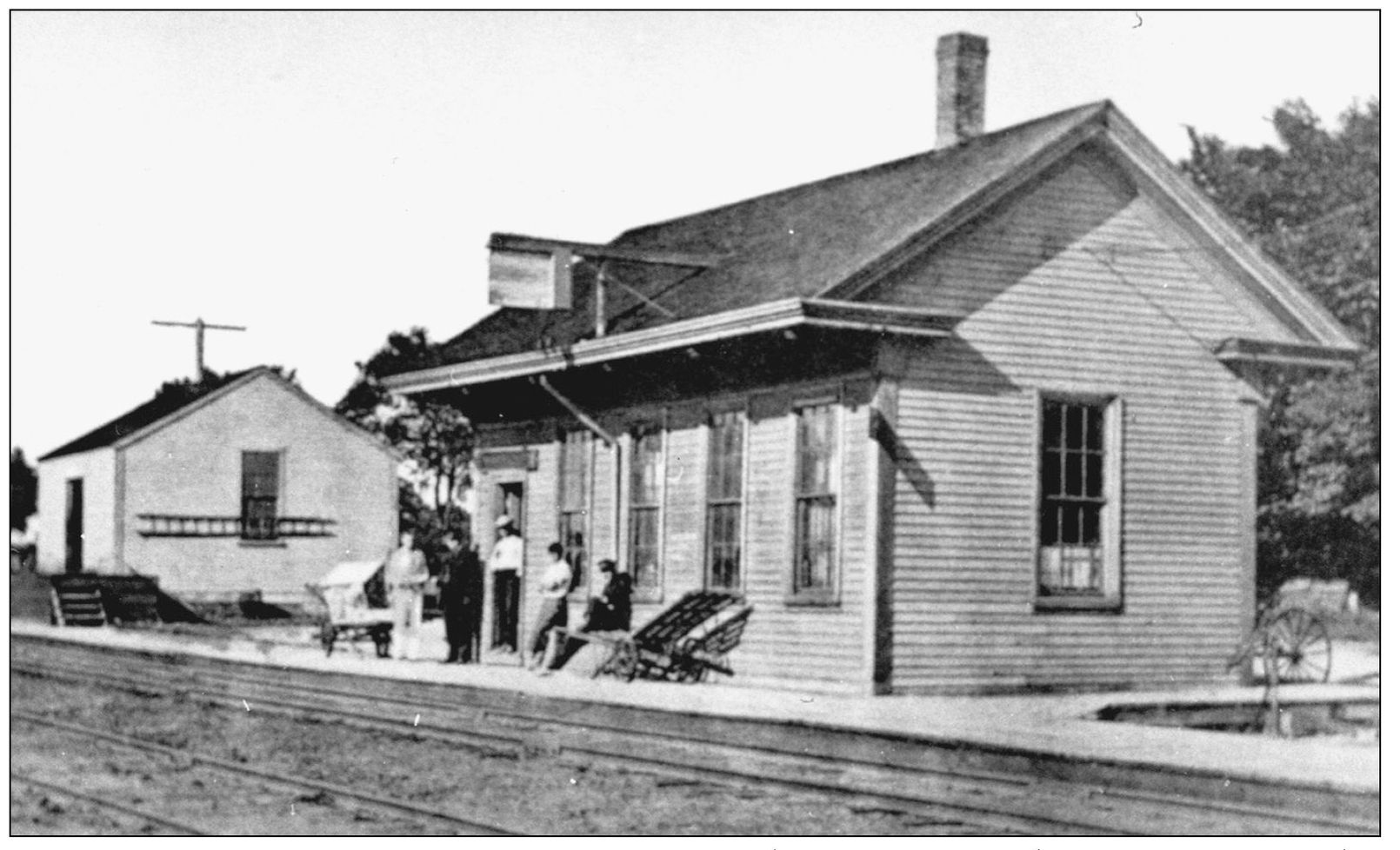
THE WEST FALMOUTH STATION, 1910. A few people are waiting for the train to arrive in this view of West Falmouth. The freight house is visible to the left of the station. The tracks were originally laid here in 1872, and although this station is now gone, the tracks remain. (Courtesy of Howard Goodwin.)

THE WEST FALMOUTH STATION, 1920. Here is the same station with a couple of automobiles waiting to pick up passengers at West Falmouth. Part of the freight house can be seen in this view. (Courtesy of Howard Goodwin.)

THE OLD FALMOUTH STATION. This station was used by the Cape Cod Railroad (and later by the Old Colony and New Haven Railroads) from 1872 until 1912. In this view, the canopy on the south side of the station has apparently been removed, possibly signaling imminent replacement of the station. (Courtesy of Howard Goodwin.)
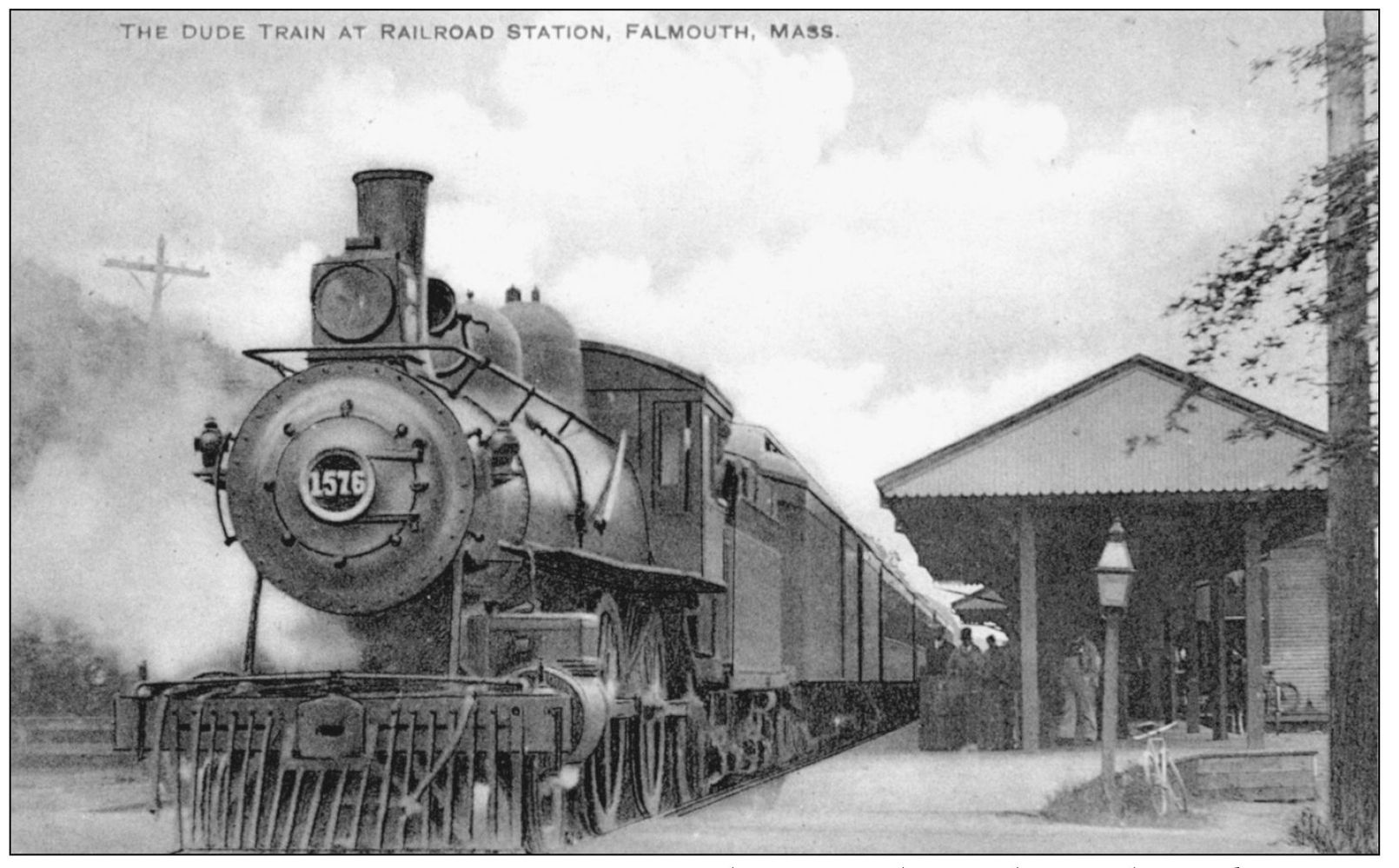
THE DUDE TRAIN AT FALMOUTH, C. 1911. This postcard view depicts the Dude train at Falmouth. At this point, it has just over three miles left in its journey and one final stop to make at Woods Hole. The Dude operated from 1884 through 1916. The station pictured is the old Falmouth station, which was replaced by the current one in 1912. (Courtesy of Howard Goodwin.)

THE FALMOUTH RAILROAD STATION. The station in this photograph dates from 1912, and judging from the automobiles in front of it, this photograph is probably of that vintage. In 1989, after years of neglect, the station was refurbished at a cost of $1 million. (Courtesy of Howard Goodwin.)
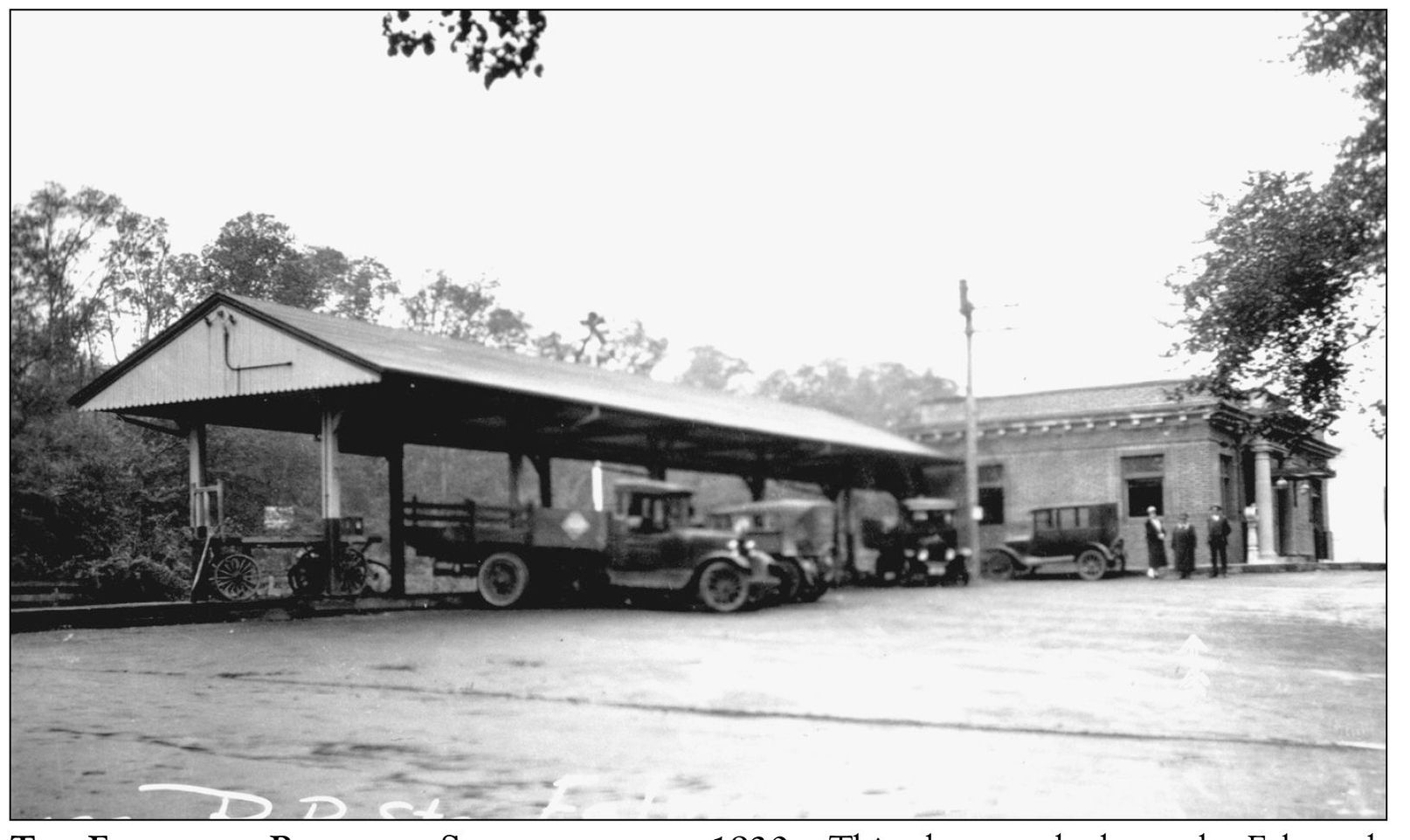
THE FALMOUTH RAILROAD STATION, C. THE 1930S. This photograph shows the Falmouth station with its canopies. (Photograph by Louis H. Benton, courtesy of Howard Goodwin.)
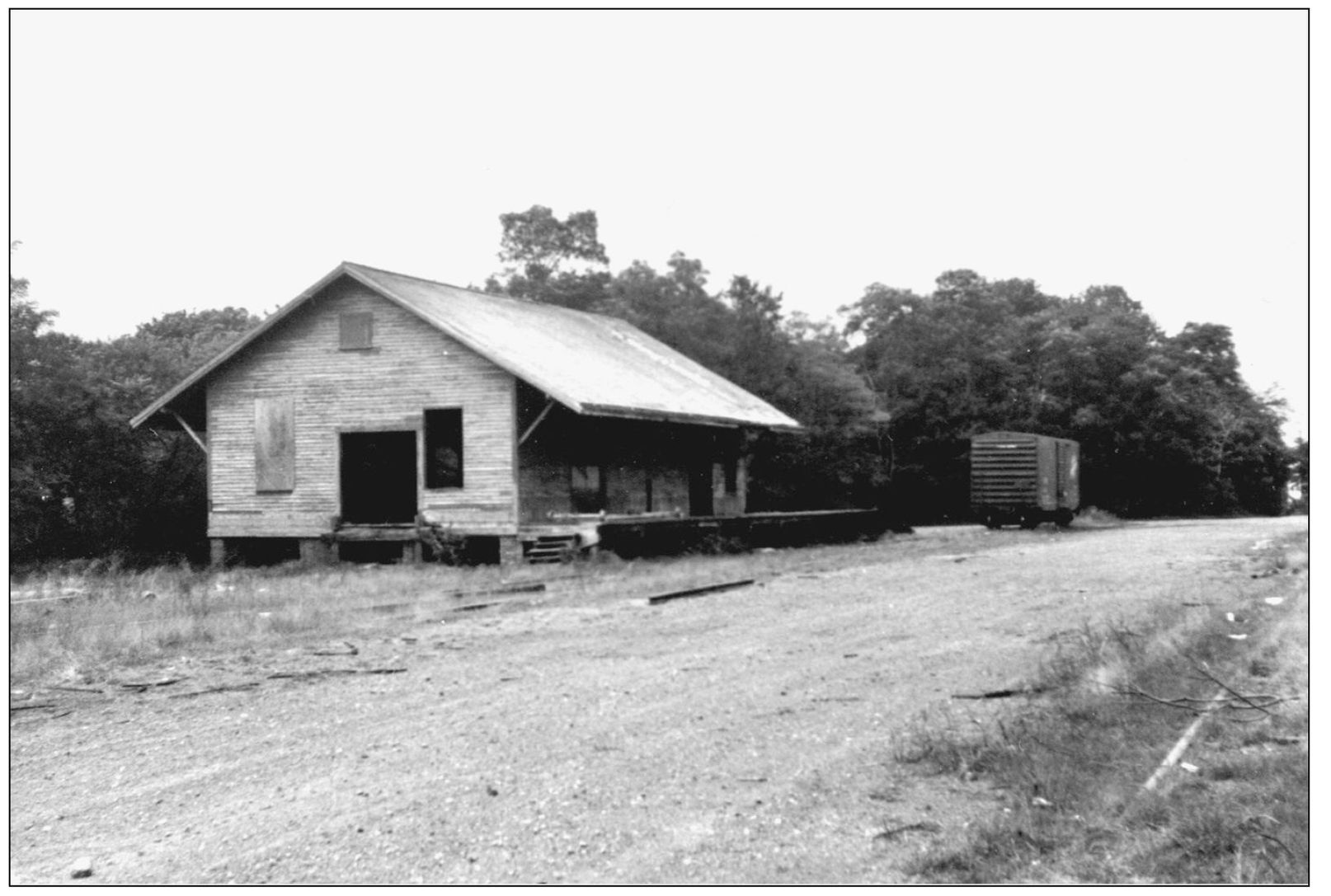
THE FALMOUTH FREIGHT HOUSE. The Falmouth freight house is in poor condition in this photograph, possibly as recent as the 1970s. (Courtesy of Howard Goodwin.)
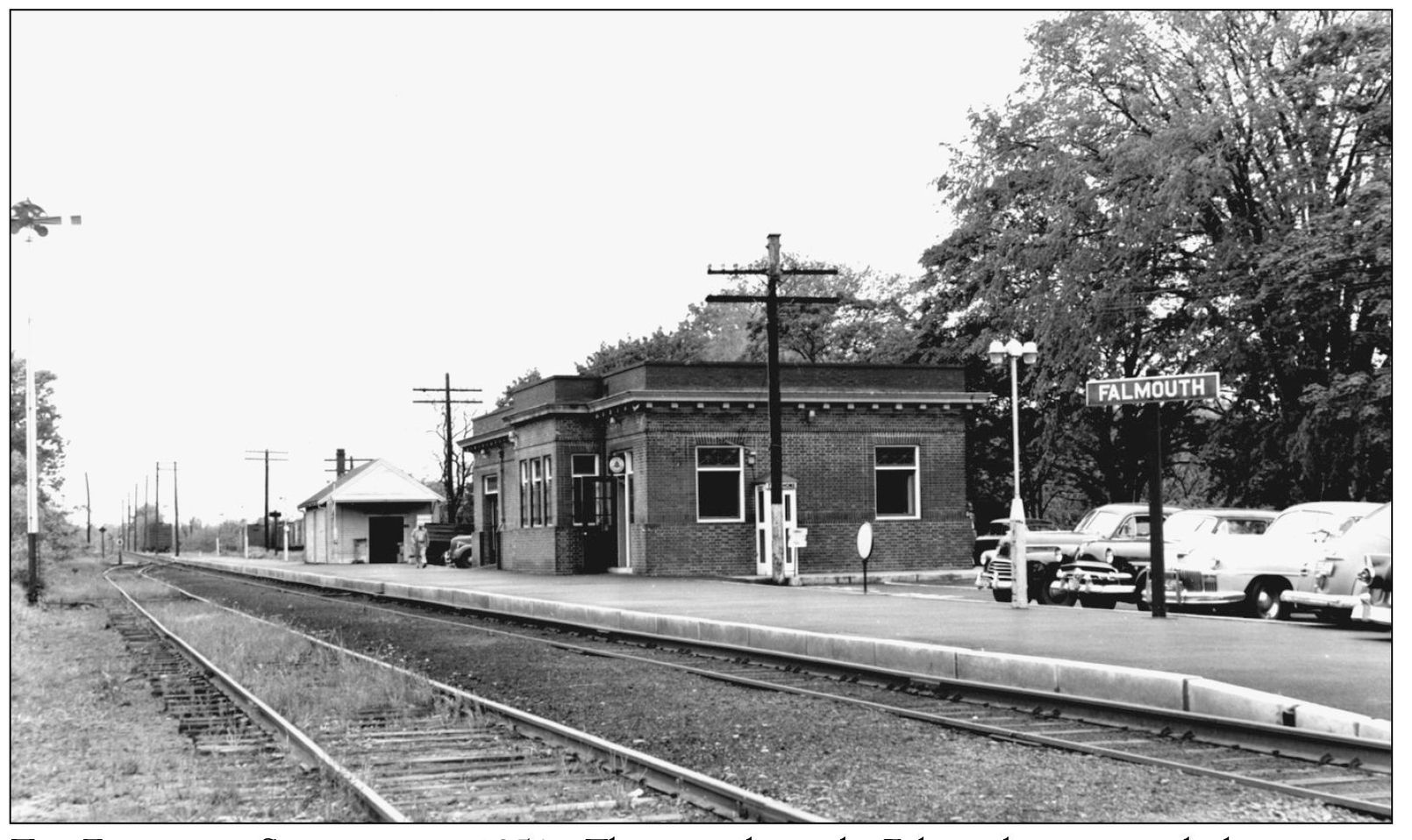
THE FALMOUTH STATION, THE 1950S. This view shows the Falmouth station with the canopies (seen in earlier photographs) removed. This station still stands today, after receiving renovations and upgrades (including a high-level platform) in 1989, although it has not seen any regular passenger service since then. It currently serves as the Falmouth terminus for Bonanza bus service. (New Haven Railroad photograph by Charles Gunn, courtesy of William Reidy.)

ON THE WOODS HOLE BRANCH, 1947. A New Haven I-2 Pacific-type locomotive is leading a good-size train (at least seven cars are visible here) across Locust Street, between Falmouth and Woods Hole. The Shining Sea bike path now occupies the railroad right-of-way at this location. (Courtesy of Philip H. Choate.)
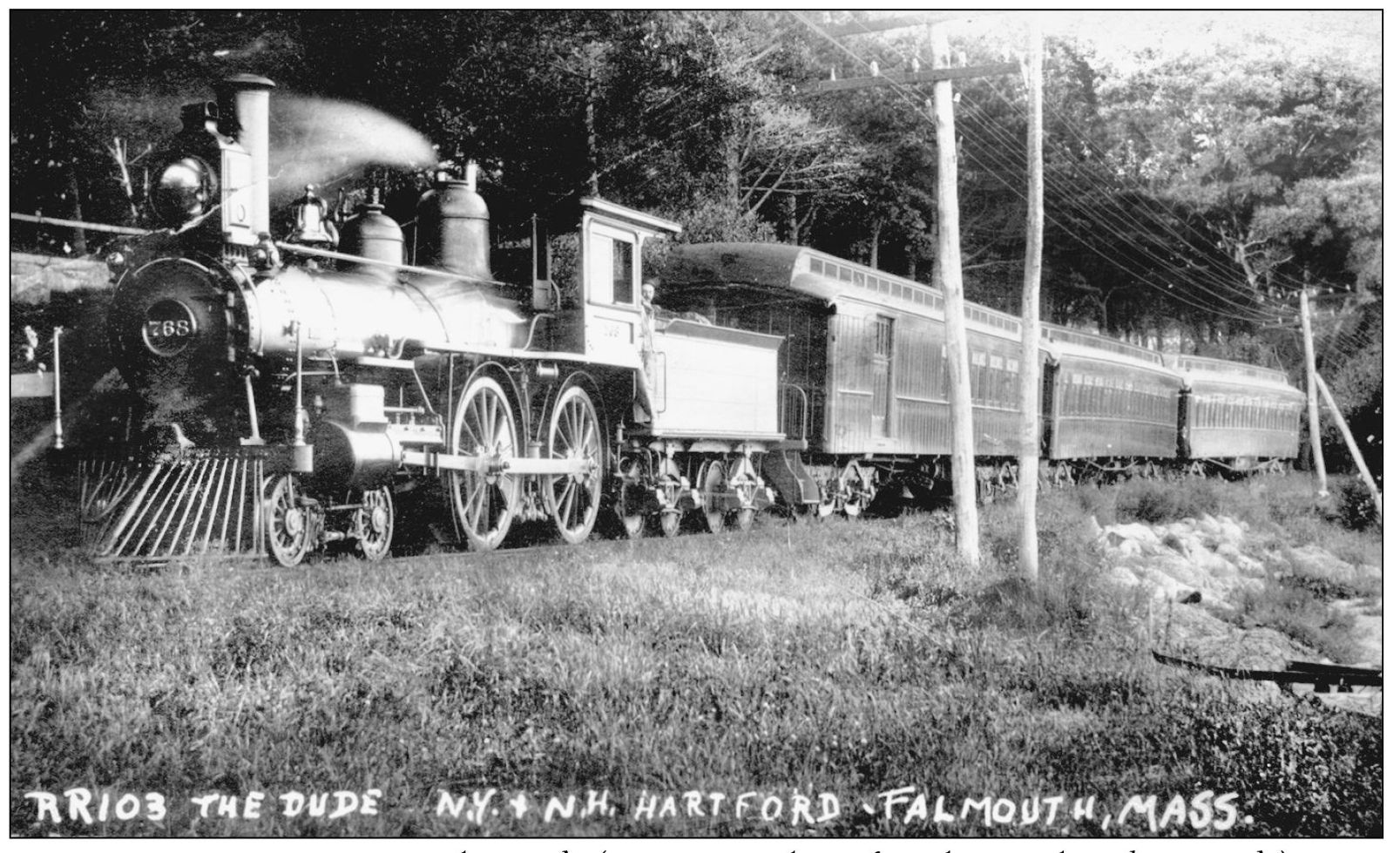
THE DUDE, WOODS HOLE. The Dude (sometimes also referred to as the Flying Dude) was a private subscription train that ran between Boston and Woods Hole from 1884 through 1916. The train was chartered by a group of wealthy Boston businessmen who desired a faster way to travel to their summer homes on the Cape, and the New Haven was able to provide it—for the right price. The regular schedule for this run was 2 hours and 50 minutes, while the Dude accomplished it in just 1 hour and 40 minutes. (Courtesy of Howard Goodwin.)
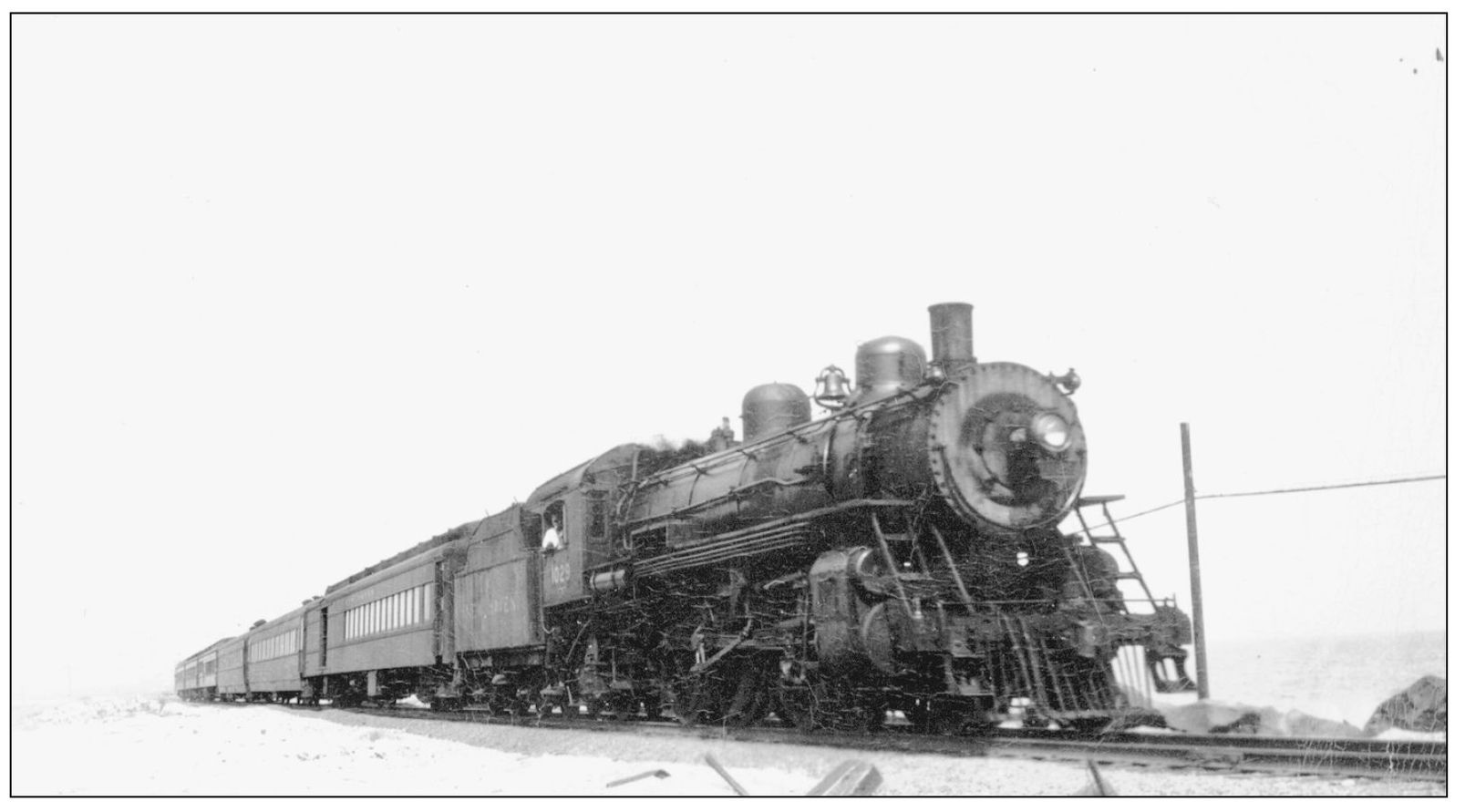
A NEW HAVEN I-1 PACIFIC ON THE WOODS HOLE BRANCH, AUGUST 1946. No. 1029 was one of 21 I-1-class Pacifics built by the Baldwin Locomotive Works for the New Haven. It is shown leading the Cape Codder between Falmouth and Woods Hole. Engineer Johnny Sylver was making the run on this day, along with fireman Jack Pierce. The New Haven Railroad acquired a total of 32 I-1s between 1907 and 1910, and all 32 survived into the 1940s, with 10 still in service in 1950. (Courtesy of Allen F. Speight.)
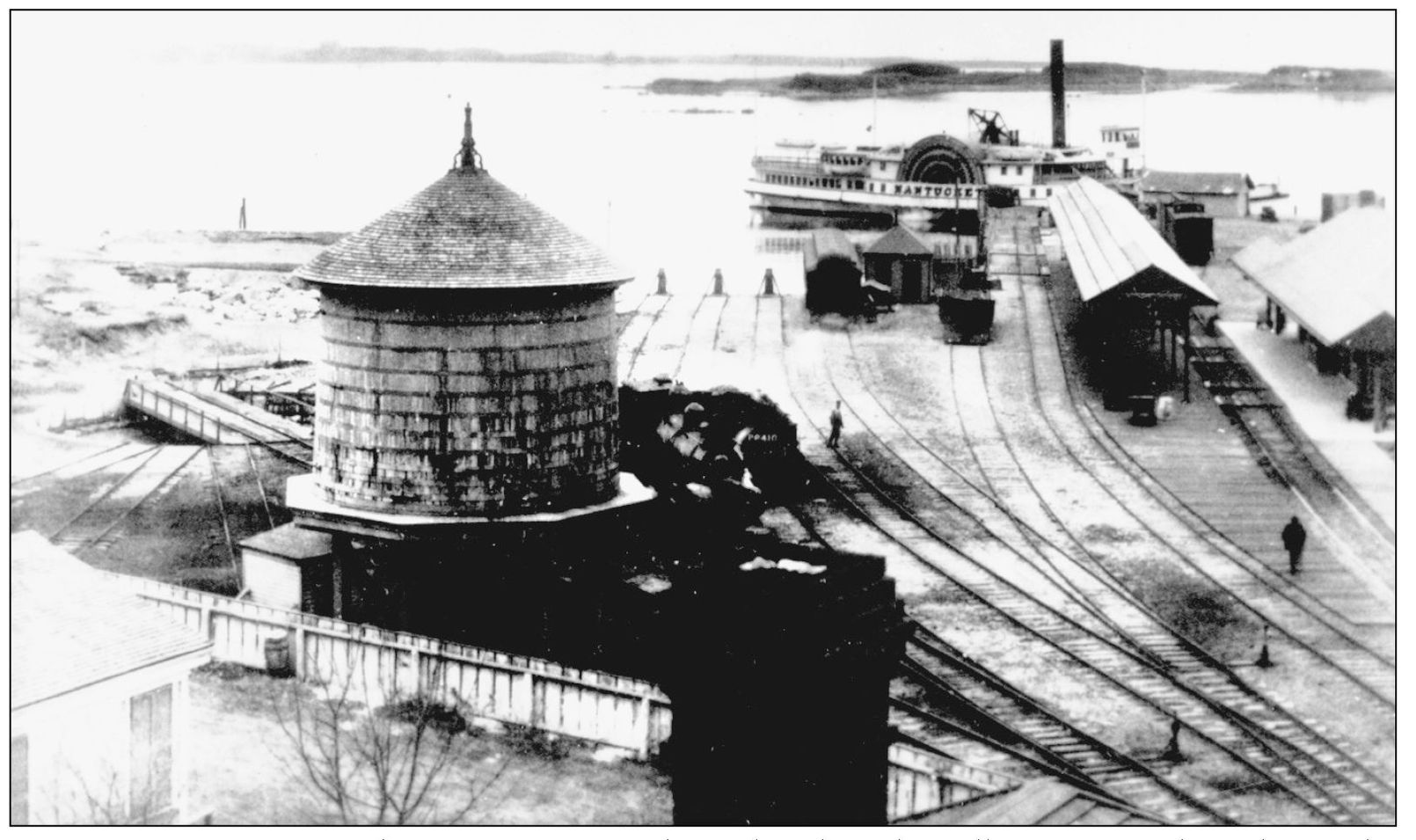
WOODS HOLE, 1902. The importance of the railroad to the village of Woods Hole can be seen in this photograph. The turntable to the left was still in use, but the roundhouse it served was gone. The sidewheel steamer Nantucket is docked at the wharf, and this view gives a good perspective of the convenience for passengers transferring between rail and boat. Today, this area provides asphalt parking lots for the island ferries. (Courtesy of Howard Goodwin.)
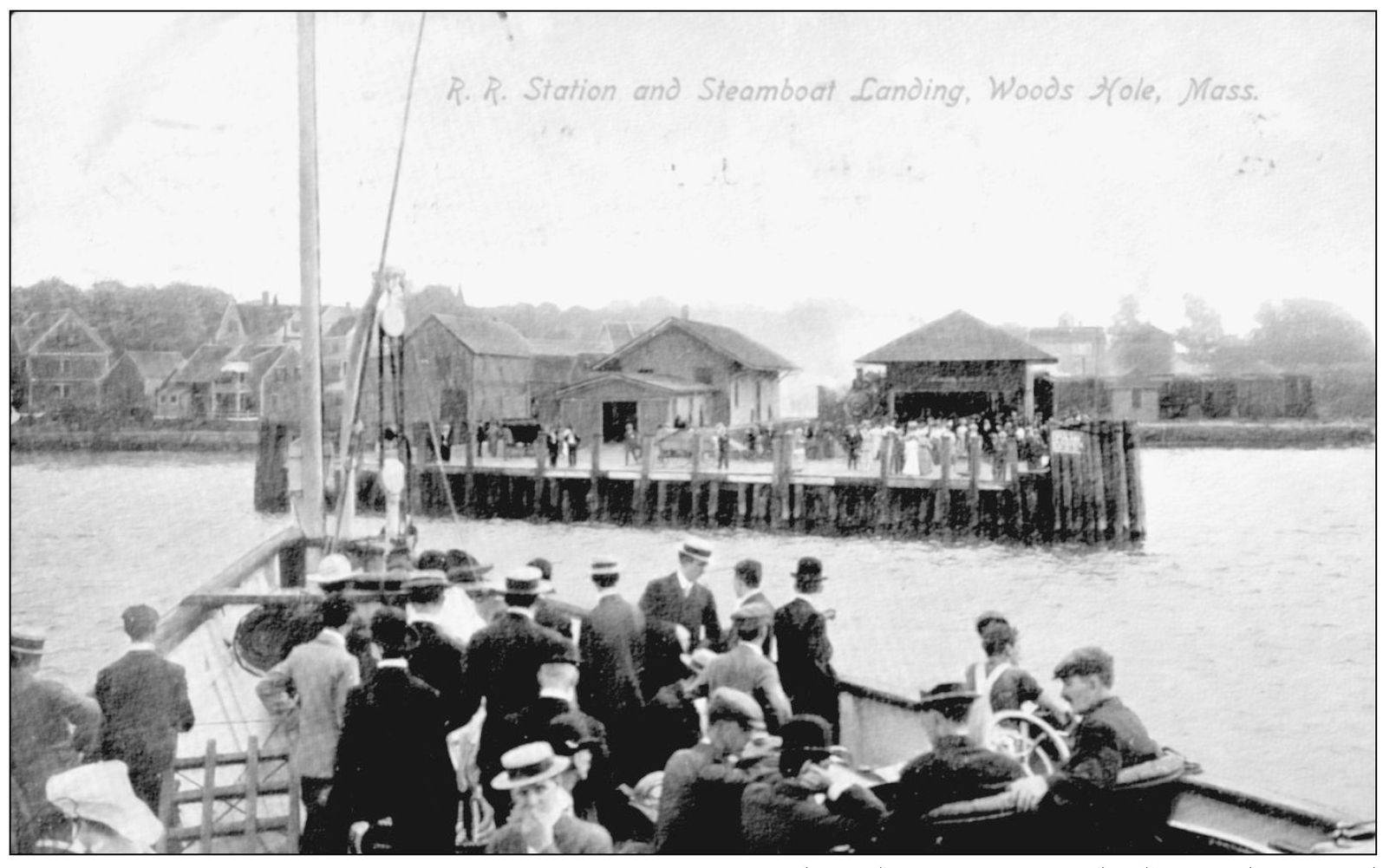
ARRIVING AT WOODS HOLE, THE EARLY 1900S. Woods Hole is seen from the boat. The crowd on the wharf likely just arrived on the train visible near the center. The railroad water tank is barely visible to the right. The railroad served Woods Hole for 92 years, from 1872 through 1964. Today the Shining Sea bike path occupies part of the railroad right-of-way between here and Falmouth. (Courtesy of Howard Goodwin.)

TAKE THE TRAIN TO MARTHA’S VINEYARD, JUNE 1952. Advertisements such as this one from the New Haven were common, promoting train travel to various attractions and events. Also common were tour packages like this one, where $4.58 would buy a round-trip train ticket from Boston to Woods Hole plus a ferry ride to the Vineyard. (Courtesy of William Reidy.)
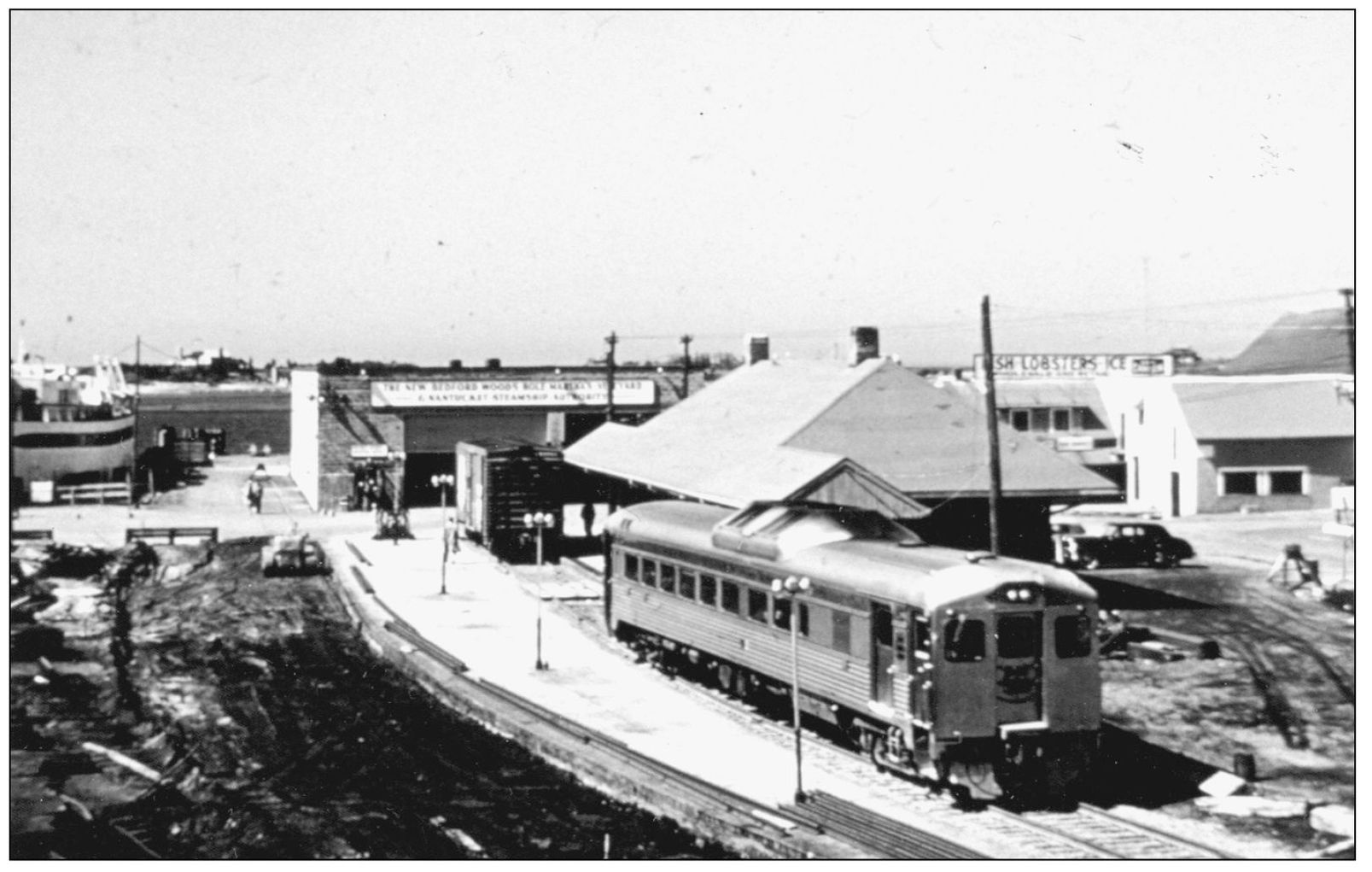
WOODS HOLE, 1963. A lone Budd rail diesel car (RDC) is shown at Woods Hole. The railroad served this village for only one more year. The once vast rail yard is down to a single station track (although a closer inspection reveals two isolated rails embedded in the pavement to the left of the new ferry terminal building). The station, constructed in 1899, lasted but one year after the rails were abandoned and removed, and it was torn down in 1969 to make way for more ferry parking. (Courtesy of Howard Goodwin.)
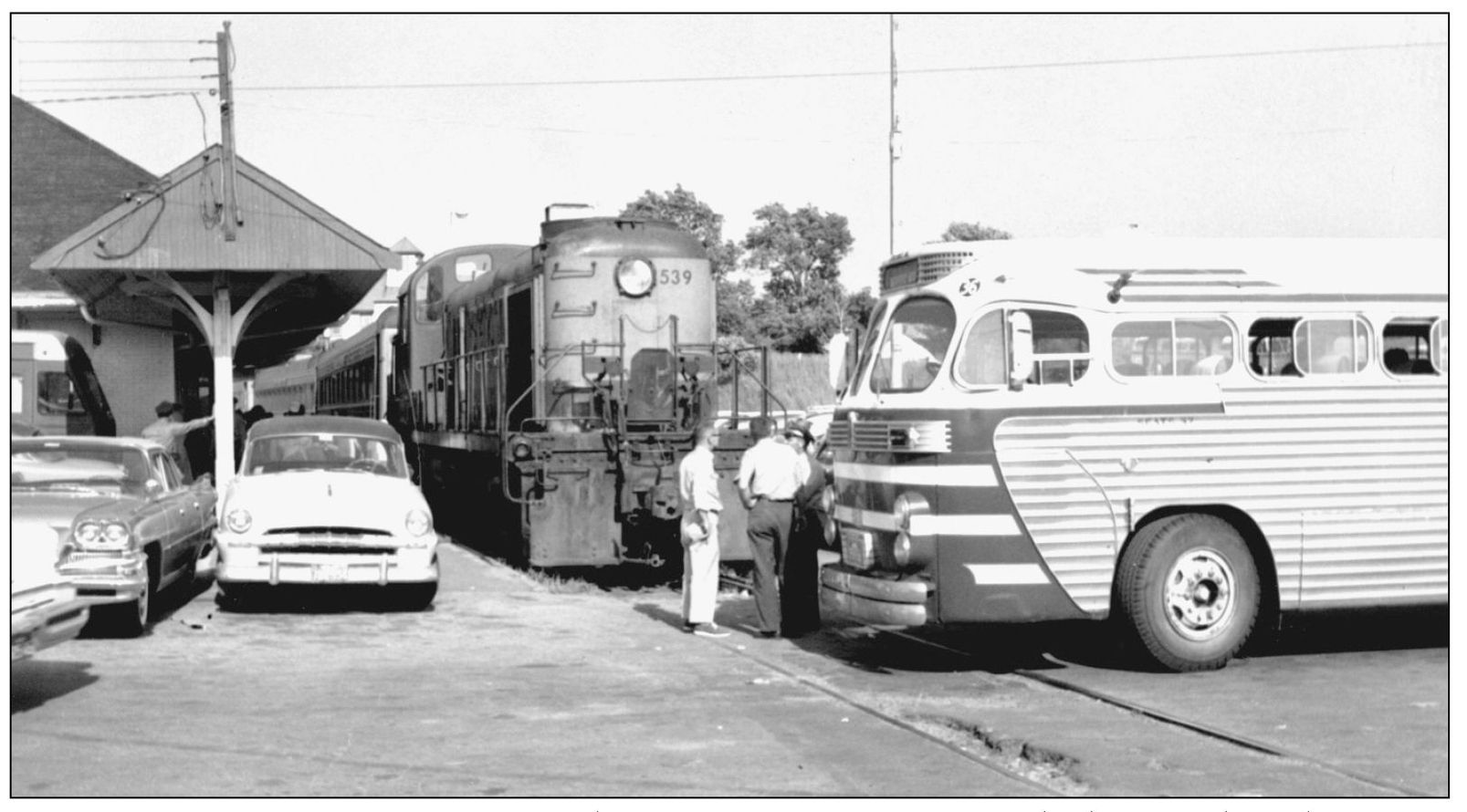
WOODS HOLE, 1960. New Haven Alco RS-3 No. 539 arrives with the Woods Hole section of the Day Cape Codder in 1960. Although this popular and profitable service resumed for the 1960 season, after a hiatus the previous year, it continued only for the next four summers. By 1968, the line was formally abandoned, and the tracks were removed. The station, built in 1899, was also torn down when service to Woods Hole ended. (Courtesy of Howard Goodwin.)
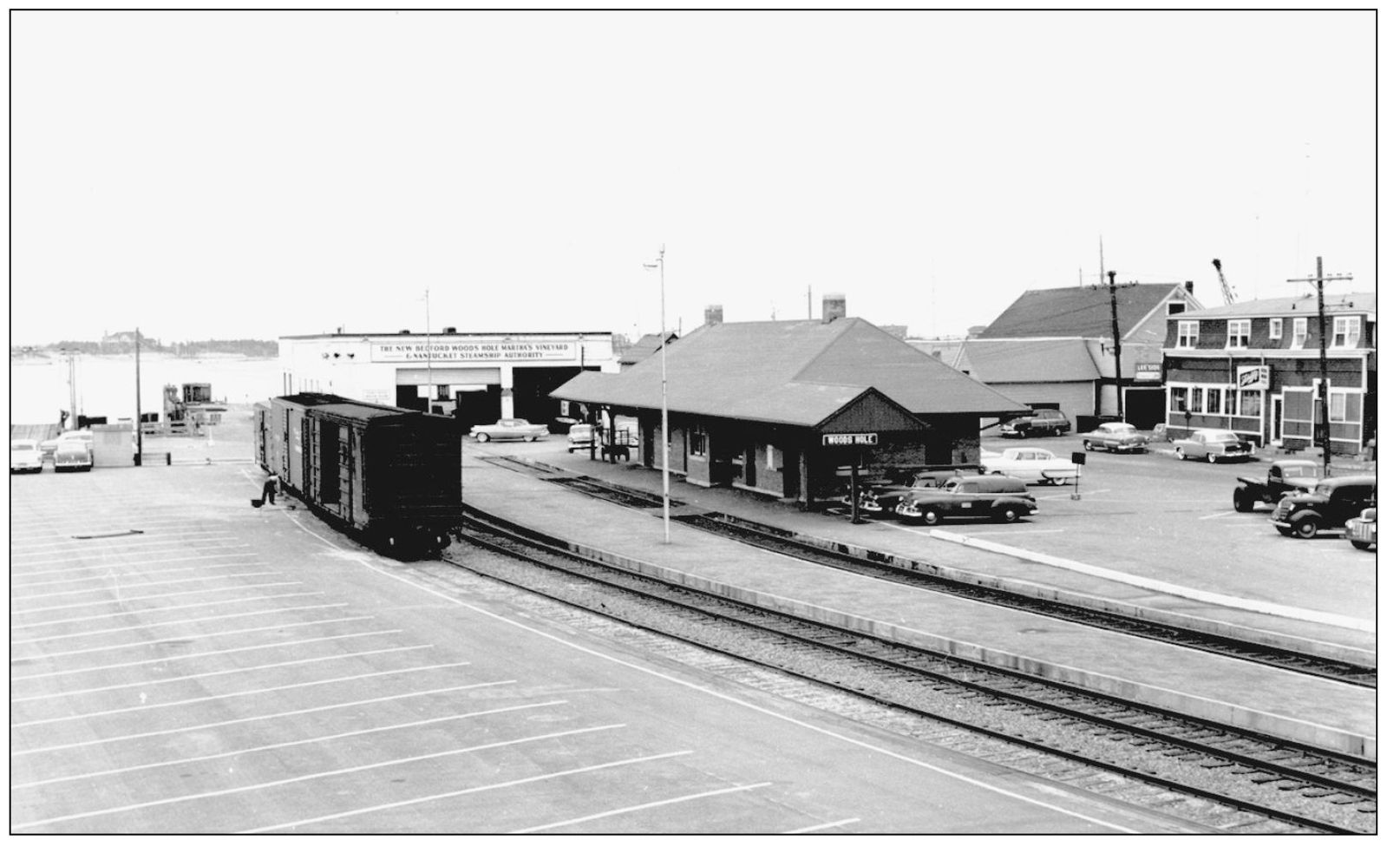
THE WOODS HOLE STATION AND FERRY DOCK, THE 1950s. This view shows the drastic reduction of railroad facilities at Woods Hole. (Courtesy of William Reidy.)

COMING INTO WOODS HOLE, JUNE 9, 1955. Alco RS-2 No. 0513 is ready to lead the passenger train out of the station. Again, notice the extensive asphalt where formerly there was rail. (New Haven Railroad photograph by Charles Gunn, courtesy of William Reidy.)
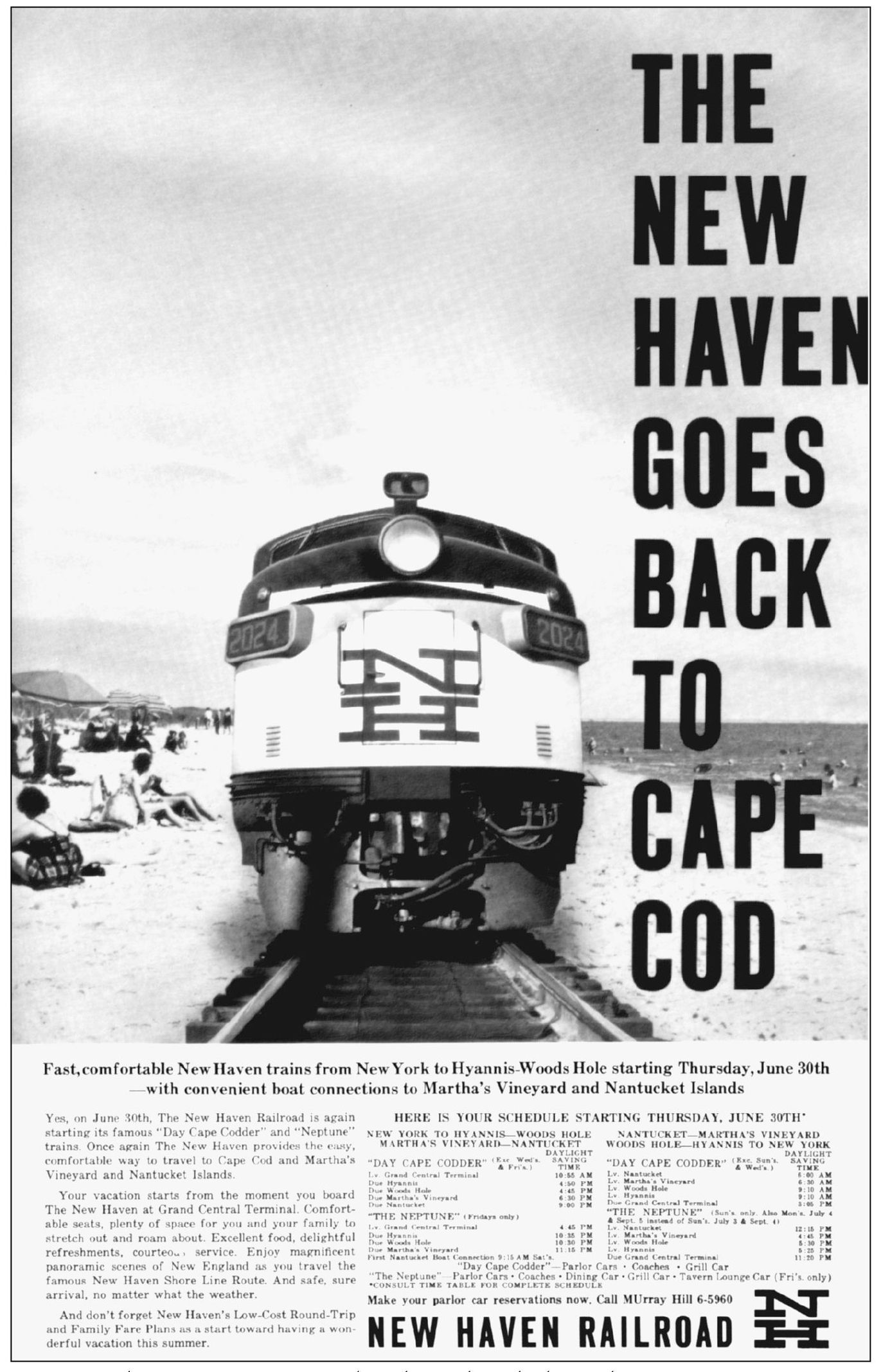
WE’RE BACK! The New Haven Railroad produced this advertisement to announce the resumption of seasonal passenger service in 1960, between New York and Cape Cod, including a direct connection at Woods Hole to the island ferries. After the one-year hiatus in 1959, when there was no rail passenger service of any kind to the Cape, the New Haven brought back this popular and profitable service and continued it through the summer of 1964. (Courtesy of William Reidy.)